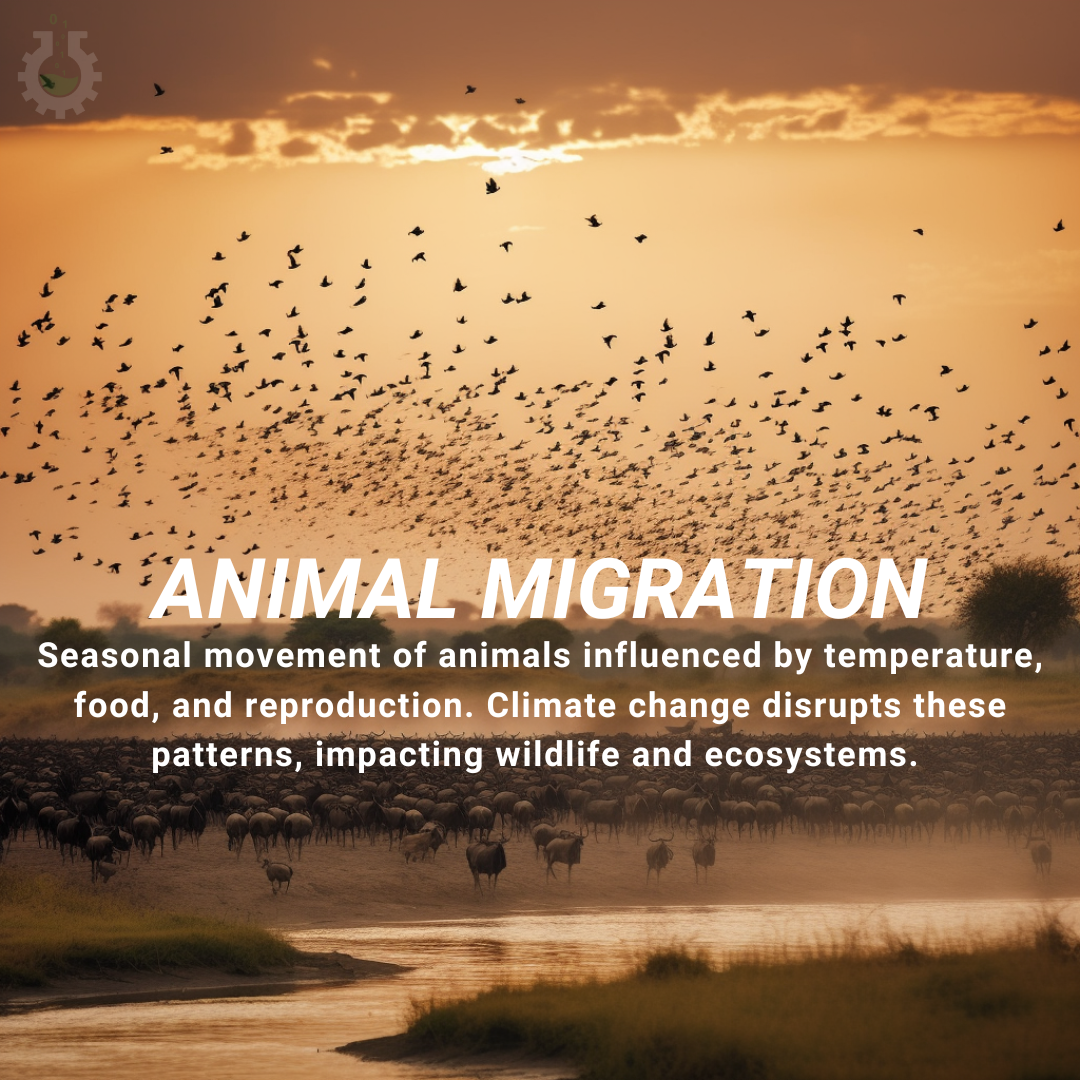September 21, 2023
Climate Change Poster Collection of the Day – Animal Migration
Book a Demo
Today’s Climate Change Poster Collection highlights Animal migration, a fascinating natural phenomenon, a rhythmic dance of the wild, prompted by changes in weather, food availability, and breeding needs. This instinctive journey involves animals moving from one location to another, covering both short and long distances, in a bid to adapt to changing habitats. Some of the most iconic migratory species include the salmon, monarch butterflies, caribou, and the Arctic terns, who navigate their way using the sun, stars, and the earth’s magnetic field.
Despite the inherent dangers such as predators, harsh weather conditions, and exhausting long distances, migration is an essential survival strategy. It helps species avoid adverse conditions, seek greener pastures, and find new resources. The migratory journey is a testament to their incredible resilience and adaptability in the face of a constantly changing environment.
For a more in-depth exploration of this intriguing phenomenon, the National Geographic Resource Library provides a comprehensive insight into the reasons, patterns, and types of animal migrations worldwide. It sheds light on the varying factors influencing animal migration, from food scarcity and temperature changes to the innate needs for mating and breeding.
Moreover, the resource library goes beyond just providing information. It offers a range of educational materials such as worksheets, maps, and activities. This makes it a valuable tool for educators and students alike, offering a plethora of resources to aid in the study of animal behavior and ecology.
In recent times, however, the patterns of animal migration have been under threat due to climate change. This global issue is affecting animal movement patterns, potentially increasing the risk of viral spillover into human populations. As habitats change and food availability is influenced, the natural migration cycles of many species are being disrupted.
This has led researchers to advocate for more studies to understand these changing movement patterns, their implications for disease transmission, and the role that global warming plays in influencing food availability and habitats. As we continue to grapple with the effects of climate change, understanding these shifts in animal behavior will prove crucial in both preserving biodiversity and protecting human health.
Discover an inspiring collection of climate change posters.



